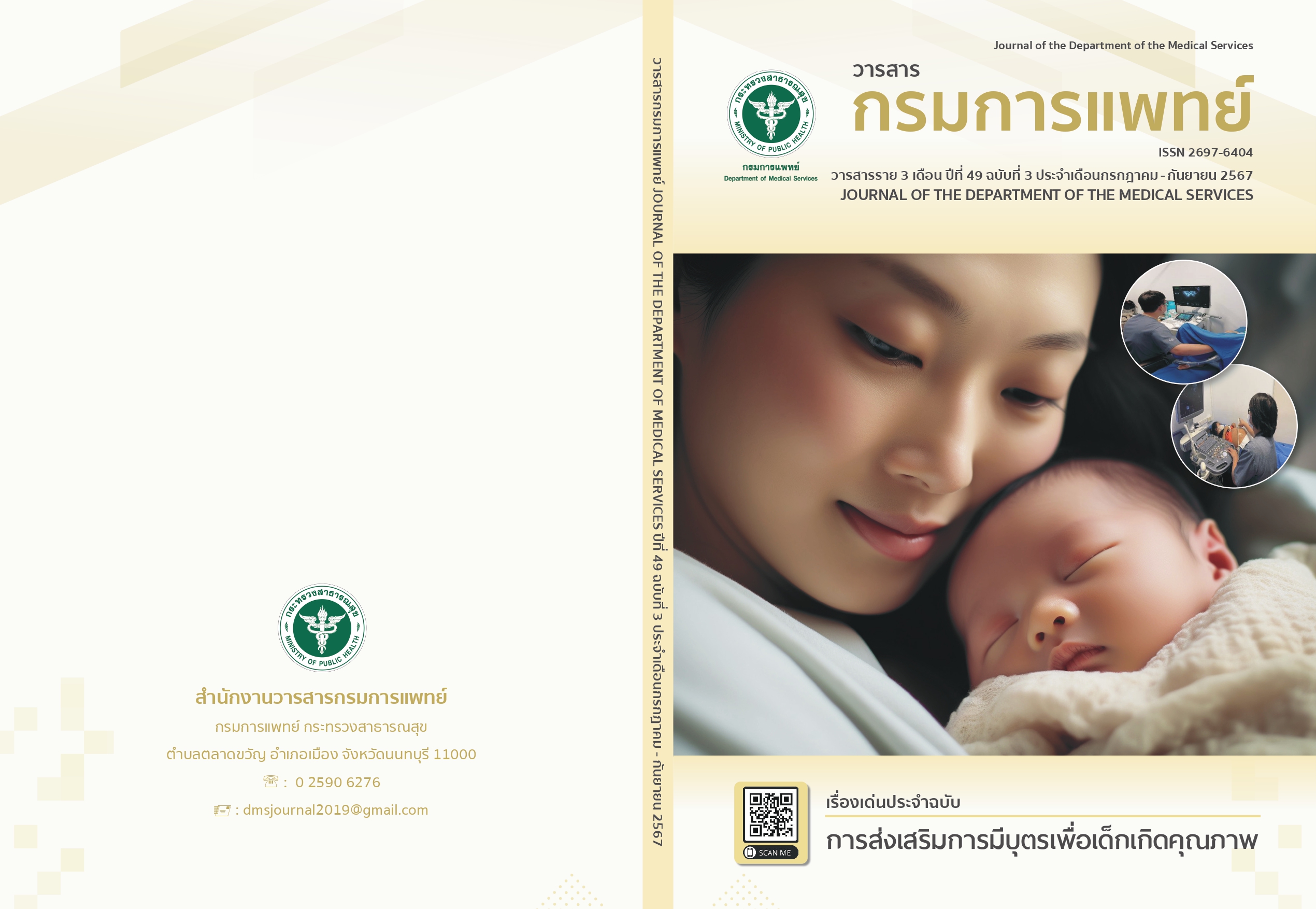Nature of Medication Adherence in Patients with Non-communicable Diseases in Tertiary Care
Keywords:
Medication adherence, Non-communicable diseases (NCDs), Prevalence, Unused medication, Tertiary careAbstract
Background: The treatment of non-communicable diseases (NCDs) aims to control symptoms and prevent complications through a combination of medication use and behavior modification. Successful treatment relies on the cooperation of patients in adhering to medication regimens. Non-adherence with medication usage is a major cause of unused medication, which in turn has implications for the country's healthcare expenditure. Objectives: To estimate the prevalence rate of medication non-adherence and assess the value of unused medication. Methods: This study employed a cross-sectional descriptive observational study from October 2020 to July 2021. The inclusion criteria were patients with at least one of the following conditions: hypertension, diabetes, and/or dyslipidemia, who were treated as outpatients in the Department of Medicine at Rajavithi Hospital. Exclusion criteria included: 1) age younger than 18 years; 2) brain abnormalities; and 3) inability to provide information. Systematic sampling was used to select patients for the study. Patients were interviewed using a developed questionnaire that had been validated by experts. Data were analyzed using descriptive statistics. Results: The study included 286 patients with NCDs. The prevalence rate of medication non-adherence in patients with NCDs was 29.72%. There were 11,341 tablets of unused medication due to medication non-adherence, with a total value of 46,339.14 Baht, averaging 545.16 Baht per patient. Atorvastatin 40 mg was the medication with the highest value of unused medication, amounting to 12,337.50 Baht, while Metformin 500 mg had the highest quantity of unused medication with 1,141.50 tablets. Conclusions: Non-adherence to medication is a considerable in patients with NCDs in tertiary care. Policymakers should plan solutions to address medication non-adherence issues in patients with NCDs, especially medication expenses, and promoting medication adherence aligned with the social and cultural context of Thai patients.
References
Charoendee K, Boriboon N, Butchumsang A, Rungrueng S, editors. NCDs Annual Report 2022. Bangkok: Aksorn graphic and design publishing limited partnership; 2023.
Division of Non-Communicable Disease, Department of Disease Control. Review of indicators for monitoring the quality of non-communicable disease services, 2020-2023. 2023.
World Health Organization (WHO). Adherence to long-term therapies: evidence for action. Geneva; 2003. p 3-5.
Hansen RA, Kim MM, Song L, Tu W, Wu J, Murray MD. Comparison of methods to assess medication adherence and classify nonadherence. Ann Pharmacother 2009;43(3):413-22.
Kongkaew C. Principles of Effective Collaboration in Medication Treatment. Bangkok: Chulalongkorn University Press; 2018.
Manakitjongkol W. Use of the medication regimen complexity index (MRCI) to assess diabetic outpatient adherence at Saraburi Hospital. Thesis of Master's degree in Pharmacy Program, Clinical Pharmacy. Graduate School, Chulalongkorn University; 2006.
Mongkolchaipak T, Pichayapaiboon S, Sangviroon A. Factors affecting medication adherence of diabetic patients at Police General Hospital. Thai J Pharm Prac 2015;7(1):47-59.
Leaungsomnapa Y, Promproh S, Leaungsomnapa S, Sourthao Y. Influence of beliefs about medication on high group of medication adherence in hypertensive patients. J Prapokklao Hosp Clin Med Educat Center 2013;30(2):146-57.
Horne R, Weinman J. Self-regulation and self-management in asthma: Exploring the role of illness perceptions and treatment beliefs in explaining non-adherence to preventer medication. Psychology Health 2002;17(1):17-32.
Curtis SE, Boye KS, Lage MJ, Garcia-Perez LE. Medication adherence and improved outcomes among patients with type 2 diabetes. Am J Manag Care 2017;23(7):e208-14.
Mongkhon P, Ashcroft DM, Scholfield CN, Kongkaew C. Hospital admissions associated with medication non-adherence: A systematic review of prospective observational studies. BMJ Qual Saf 2018;27(11):902-14.
Capoccia K, Odegard PS, Letassy N. Medication adherence with diabetes medication: A systematic review of the literature. Diabetes Educ 2016;42(1):34-71.
Office of the National Economics and Social Development Council. Quarterly Gross Domestic Product (QGDP). [Internet]. 2019. [cited 2019 Oct. 31] Available from: https://www.nesdc.go.th/nesdb_en/ more_news.php?cid=155.
Cutler RL, Fernandez-Llimos F, Frommer M, Benrimoj C, Garcia-Cardenas V. Economic impact of medication non-adherence by disease groups: a systematic review. BMJ Open 2018;8(1):e016982.
Makki M, Hassali MA, Awaisu A, Hashmi F. The prevalence of unused medications in homes. Pharmacy (Basel) 2019;7(2):61.
Suwannaprom P, Niamhun N, Champoonot P, Phosuya C, Chowwanapoonpohn H, Supakul S, et al. Items and value of household leftover medicines for chronic conditions at Sansai-Luang sub-district, Sansai district, Chiangmai province. Thai Pharm Health Sci J 2012;7(1):22-8.
Dehdari L, Dehdari T. The determinants of anti-diabetic medication adherence based on the experiences of patients with type 2 diabetes. Arch Public Health 2019;77:21.
Najimi A, Mostafavi F, Sharifirad G, Golshiri P. Barriers to medication adherence in patients with hypertension: A qualitative study. J Educ Health Promot 2018;7:24.
Tan CS, Hassali MA, Neoh CF, Saleem F. A qualitative exploration of hypertensive patients' perception towards quality use of medication and hypertension management at the community level. Pharm Pract (Granada) 2017;15(4):1074.
Bailey SC, Oramasionwu CU, Wolf MS. Rethinking adherence: a health literacy–informed model of medication self-management. J Health Commun 2013;18(Suppl 1):20–30.
Thammawut W, Leuvittawat P. Survey on the quantity and value of unused medication in outpatients at the department of medicine, Siriraj Hospital. Siriraj Med Bull 2014;7(1):20-5.
Punnapapaisan W, Kittiboonyakun P, Saramunee K. Designing the system for management of unused medicine in patients with diabetes mellitus by using root cause analysis framework. TJPP 2018;10(2):300-14.
Chantapattarankul P, Thongprong S, Thongmee M. Survey of leftover drugs among patients with chronic diseases at Bangsaphan Hospital, Prachuap Kirikhan. HuaHin Med. J 2018;3(1):119-25.
Srisraluang W, Dilokthornsakul P. The cost and cost saving study of the pharmacy service on leftover medicine in pediatric out-patient: a case study for rheumatism in pediatric patients at Queen Sirikit National Institute of Child Health. J DMS 2019;44(3):58-65.
Downloads
Published
How to Cite
Issue
Section
License
Copyright (c) 2024 Department of Medical Services, Ministry of Public Health

This work is licensed under a Creative Commons Attribution-NonCommercial-NoDerivatives 4.0 International License.
บทความที่ได้รับการตีพิมพ์เป็นลิขสิทธิ์ของกรมการแพทย์ กระทรวงสาธารณสุข
ข้อความและข้อคิดเห็นต่างๆ เป็นของผู้เขียนบทความ ไม่ใช่ความเห็นของกองบรรณาธิการหรือของวารสารกรมการแพทย์



